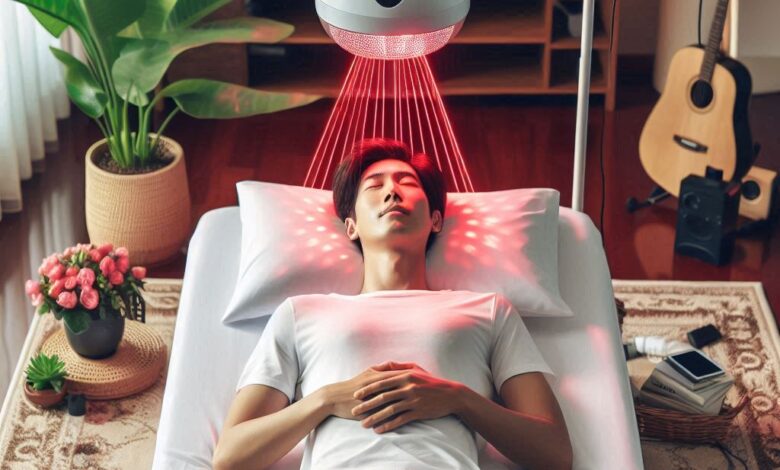Low Level Laser Therapy: How Effective is it?

Low-level laser therapy (LLLT) has gained attention as a potential treatment for hair loss, particularly in androgenetic alopecia (pattern baldness). Here’s an overview of what LLLT is and its effectiveness in promoting hair growth:
What is Low-Level Laser Therapy (LLLT)?
Low-level laser therapy, also known as cold laser therapy or photobiomodulation therapy, uses low-power lasers or light-emitting diodes (LEDs) to stimulate cellular activity. The light energy penetrates the scalp tissue and is absorbed by the hair follicles. This is believed to promote hair growth by:
- Increasing Blood Flow: LLLT is thought to enhance microcirculation and nutrient delivery to the hair follicles, which can improve follicle health and function.
- Stimulating Cellular Metabolism: The light energy may stimulate cellular metabolism and protein synthesis within the hair follicles, promoting follicle activity and hair growth.
- Modulating Hair Growth Cycle: LLLT may prolong the anagen (growth) phase of the hair cycle, leading to thicker, healthier hair strands.
Effectiveness of LLLT for Hair Growth
Research on the effectiveness of LLLT for hair growth has shown mixed results. While some studies and clinical trials suggest positive outcomes, others have found limited or inconclusive evidence. Here are key points from the available research:
- Clinical Studies: Several clinical studies have investigated the efficacy of LLLT devices (such as laser combs, helmets, or caps) in treating hair loss. Some studies have reported improvements in hair density, thickness, and growth rate among participants using LLLT devices compared to controls.
- Variability in Results: The effectiveness of LLLT can vary depending on factors such as the device used, treatment protocol (frequency and duration of sessions), and individual response to therapy. Some individuals may experience significant improvements, while others may see minimal or no benefits.
- Combination Therapies: LLLT is sometimes used in combination with other hair loss treatments, such as minoxidil (topical solution) or finasteride (oral medication). Combining therapies may enhance overall effectiveness in promoting hair growth.
- Long-Term Use: Continuous and consistent use of LLLT devices over several months is often recommended to achieve and maintain results. Hair growth typically occurs gradually, and visible improvements may take several months to become noticeable.
Precautions and Considerations
- Consultation: Before starting LLLT or any hair loss treatment, it’s essential to consult with a healthcare provider or dermatologist to determine the underlying cause of hair loss and discuss suitable treatment options.
- Device Selection: Choose LLLT devices that are FDA-cleared or approved for treating hair loss. Follow manufacturer instructions regarding device usage and safety precautions.
- Side Effects: LLLT is generally considered safe when used as directed. However, some individuals may experience mild side effects such as scalp irritation or tingling sensations during treatment sessions.
- Consistency: Consistent use of LLLT devices as prescribed is important to potentially see beneficial effects on hair growth. Missing sessions or discontinuing treatment prematurely may impact outcomes.
Conclusion
Low-level laser therapy (LLLT) shows promise as a non-invasive treatment option for promoting hair growth in individuals with certain types of hair loss, such as androgenetic alopecia.
While research on its effectiveness continues, some studies suggest positive outcomes in improving hair density and thickness. As with any hair loss treatment, results can vary, and individual responses may differ. It’s advisable to consult with a healthcare provider to determine if LLLT is suitable for your specific condition and to discuss expectations and treatment options.

